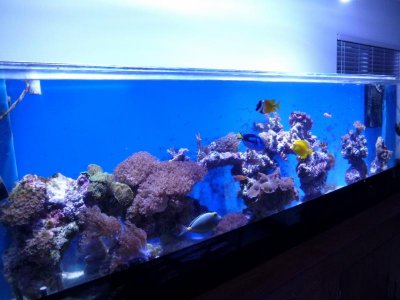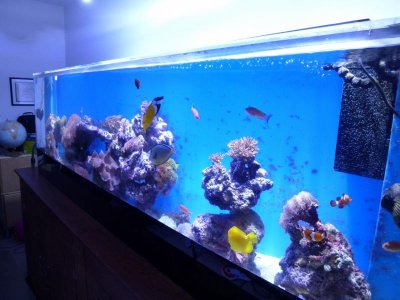pfoxgrover
New member
Just a quick update.
The nitrate induced green hair algae war has escalated to new levels.
I have been using the caustic soda method described by Glennf and that does work but since you can only use a little each day, I'm having trouble keeping up with the growth. I have done about 7 - 8 ml applications to my 240 gallon tank so far.
I have been reluctant to spend a lot of money on a clean-up crew. I have 3 med/large tangs and a rabbit fish along with hundreds on tiny round nocturnal snails. I have also been manually removing it from the sand and where it's bad enough to pull out by hand.
Nitrate is at 0 and PO4 is at 0.046 ppm.
The nitrate induced green hair algae war has escalated to new levels.
I have been using the caustic soda method described by Glennf and that does work but since you can only use a little each day, I'm having trouble keeping up with the growth. I have done about 7 - 8 ml applications to my 240 gallon tank so far.
I have been reluctant to spend a lot of money on a clean-up crew. I have 3 med/large tangs and a rabbit fish along with hundreds on tiny round nocturnal snails. I have also been manually removing it from the sand and where it's bad enough to pull out by hand.
Nitrate is at 0 and PO4 is at 0.046 ppm.


